Musings from San Antonio, site of 2015 ANS meeting
This post brought to you by the generous readers who provided support for my travel and lodging in San Antonio. I hope you enjoy the resulting reports.
My first observation is to note that Texans drive fast. The Texas segment of I-10 between the eastern border and San Antonio is the first road I’ve been on in recent years with a 75 MPH speed limit. Like most interstates, people who travel at the speed limit need to stay to the right to allow those exceeding the speed limit by 10-30 MPH to speed on by.
I chose to drive from Lynchburg to San Antonio for several reasons.
- Last minute airline tickets from Lynchburg are pretty expensive.
- I like to see new places from the ground.
- My mom, brother and sister-in-law live almost exactly half-way between Lynchburg and San Antonio.
- Driving allowed me to bring my bicycle.
- Driving allows a more flexible return trip that isn’t yet planned.
- My car gets at least 40 MPG on the highway, even while attempting to keep up with Texas drivers with a bike on the back.
- I’m getting increasingly frustrated with airport security theater.
After arriving a little earlier than expected on Saturday, I ran into Sama Bilbao. She mentioned that there was an invitation-only reception planned for Saturday evening. Fortunately, I know a few people in high places, so I managed to wrangle a last minute invitation.
At the reception, Alan Waltar (a past president of ANS, former director of nuclear energy at Pacific Northwest National Laboratory, former department head of Nuclear Energy at Texas A&M, world renowned fast reactor expert, and community theater actor) and I had a great conversation about an LNT-related retreat.
I’m not suppose to provide many details since the attendees are still working on a product. I’ll limit my report to the fact that there are talented and knowledgeable professionals who believe it’s time to revise our officially accepted model. Not surprisingly, there are others who aren’t yet convinced of the need for a change.
It dawned on me that I was worn out. Long drives can have that effect. No post reception gathering to report.
Sunday morning, after completing yesterday’s lengthy post about the monetary influences on Stanford’s energy, climate change and environmental programs, I took advantage of a cool morning to go exploring. I took the photos that decorate this post on the Mission Trail that heads south along the river out of San Antonio.
While waiting for the start of the President’s reception, I spent some time at the pool, getting in a few laps and taking the opportunity to talk to a few people. One of them turned out to be Nichole Ellis, who was my guest on Atomic Show #95 in May 2008. It took a while for us to recognize each other. I’d grown a beard and she’d gone from blond to dark brunette. Her business is still going strong.
I introduced myself to a couple who looked like they might be there for the ANS meeting, but it turned out that they were just on ahort vacation from Oklahoma where Derek worked in the oil and gas business and Amy worked as a personal trainer and in a chiropractor’s office.
We had a great conversation about energy; they were fascinated by my description of performance of my submarine reactor – 14 years without refueling using a fuel mass that weighed only a bit more than I do. I then used the numbers from the ANS fuel pellet card — one commercial fuel pellet contains as much energy as a ton of coal or 147 gallons of crude oil — to pull more questions from them.
They asked what the downside was. They had no fear and no preconceived notions. Derek immediately got it when I told him how frequently people mention our three major accidents (TMI, Chernobyl and Fukushima), saying he wished that his industry could name their major accidents — each year — on a single hand.
My reason for reporting this conversation is to remind readers to stop making assumptions about what the public thinks about nuclear energy. I think it is safe to say that most of them don’t think about it at all and that they are wide open to learning more.
I was having so much fun talking to Derek and Amy that I lost track of time and ended up being a little late to the President’s reception.
As usual, there was a good crowd. However, there was something quite unusual that I didn’t even think about until just now.
Every other President’s reception that I’ve attended took place in the vendor exhibition hall. That provided the attendees the opportunity to wander through the booths, collect a few give aways, and listen to a few pitches about new projects or products.
Last night, there were no vendors. I think there might have been a few tables at the edges, but nothing like the kinds of displays that I’m used to seeing. I’ll have to follow up on that today.
Persistence is often mentioned as a common trait among people who succeed in tough fields of endeavor. I’m beginning to understand the value of showing up over and over again.
Even though I was wearing a prominent flag on my nametag indicating that I was there as a member of the media and looking for some stories, I was included in a number of fascinating conversations. When I get a little more time, I will probably turn some of these into individual posts, but I’d like to provide a quick summary here.
There are well-connected people that are working to convince the Senate to pass a bill similar to the House bill that passed last session to take a new look at the health effects of low dose radiation. They are seeking to have the Senate make a relatively small change that would reassign responsibility from the National Academies of Science to the National Commission on Radiation Protection.
The idea is that the NAS has a broad range of interests while the NCRP was chartered by Congress for a very specific task of evaluating science associated with radiation health and assisting in determining the most reasonable standards that would allow us to gain the maximum benefits from radiation science. I think that would be a good move and would produce a better product.
The North Anna 3 project is continuing on a steady path forward. The COL application process is currently scheduled to be completed by the end of 2016. No one should expect any final investment decision until after that process has been completed. It is a necessary, but not sufficient hurdle that must be overcome.
Believe it or not, the decision timing will be directly affected by the liquified natural gas export industry. Dominon, the company that owns the North Anna nuclear power station, needs to finish its project to turn Cove Point into a liquefaction facility before it can finance another multi-billion dollar, multi-year project.
It might be time for nuclear professionals that live in Virginia and North Carolina to make friends with the groups that have organized to oppose the two natural gas pipelines that are supposed to pass through places like Nelson County, Craig County, Roanoke County and Montgomery County. Those pipelines are planned to provide a transportation pathway to move Marcellus Shale gas to combined cycle plants planned for North Carolina.
If the pipelines aren’t built, nuclear energy will benefit. Existing plants won’t be undercut and William States Lee will be even more necessary than it already is.
Of course, there are a number of Virginia nuclear professionals who will have conflicts of interest, since they work for Dominion, one of the pipeline owners. It’s time, however, for us to recognize what our competitors already know; the energy business sometimes involves active opposition in order to win.
My final teaser is the fact that fast reactor advocates need to come together yesterday to help the federal government understand that the only facility in the world capable of providing the neutrons needed for fuel qualification tests for fast reactors is the BOR-60 located in Russia.
Think about the implications of that, given the current political situation. Consider the risk that a vendor would have to accept even if they were to start a fuel irradiation program in that reactor. What if they invest a few years into that effort, only to have the fuel stopped from leaving Russia. No performance data — which is absolutely required to support licensing in any country — would be obtained if that happened.
We don’t have to build a new facility. There is one located just a few hours drive from TerraPower’s Seattle office. The FFTF may have been forcibly shutdown, but the people assigned to the task carefully ensured that it was laid up in a condition that would allow a restart.

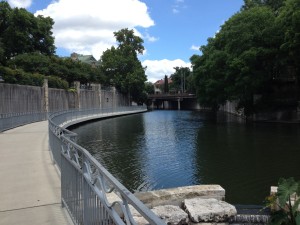
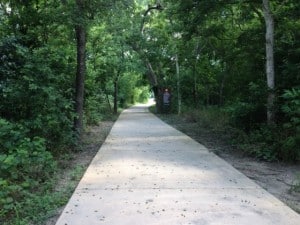
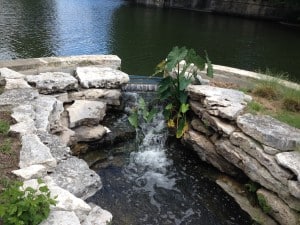
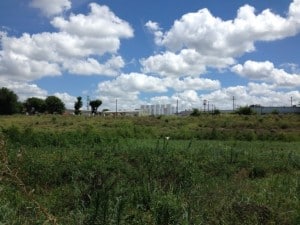
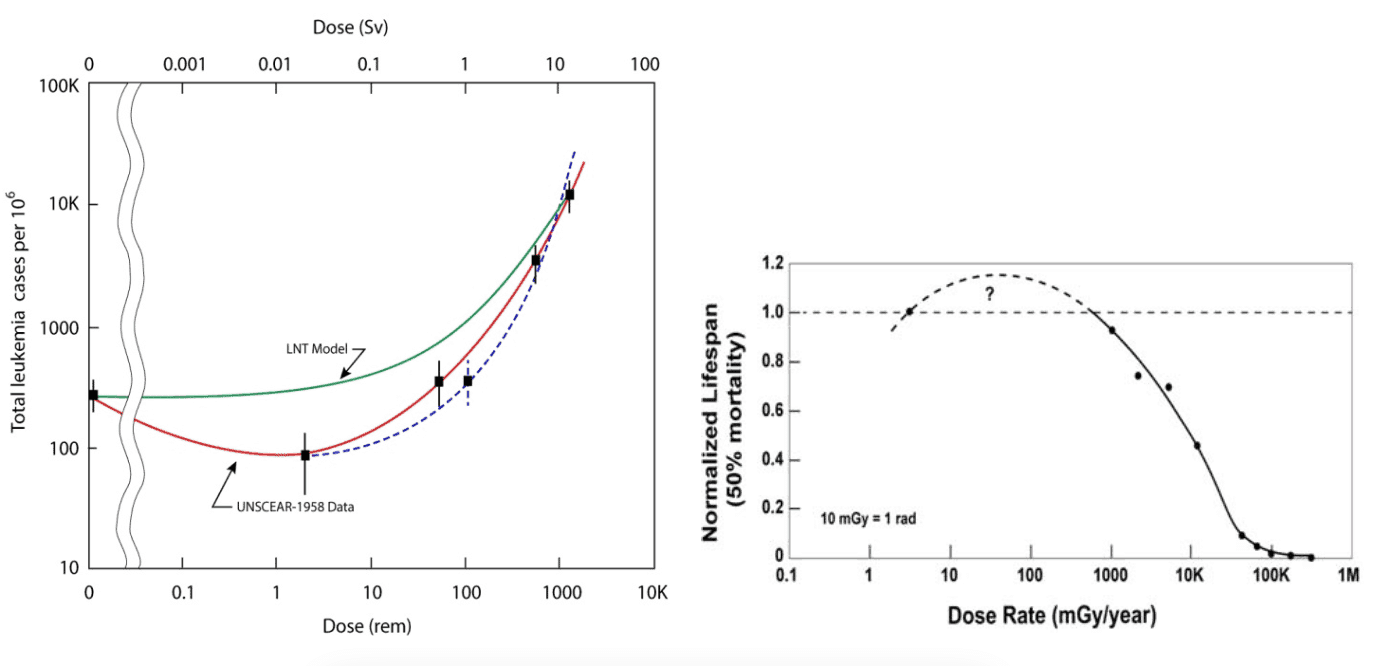
About this time of year in 2007, I was playing reporter in Silicon Valley. Like you, I drove from the east coast. Hope to get more details!
“Derek immediately got it when I told him how frequently people mention our three major accidents (TMI, Chernobyl and Fukushima), saying he wished that his industry could name their major accidents — each year — on a single hand.”
Another point I often make is that six people died in the nuclear industry’s third worst accident (Fukushima), none due to radiation exposure. Then I ask how many people died in the third worst ever fossil fuel industry accident – more than six I bet.
Chernobyl was the nuclear industry’s worst accident — if Fukushima was the third-worst (and it was clearly worse than TMI), which was the second-worst?
I’m sorry, you’re right. Fukushima was the second-worst; the third -worst was Three Mile Island, to which not a single casualty was ever attributed [1].
[1] https://en.wikipedia.org/wiki/Three_Mile_Island_accident
Wish I was there. I mean, it’s only one state over. Right there, just a rock’s throw. I’m with you on preferring the drive over airport “security.”
As for your unplanned route home, try I-10 on over to El Paso. Your diesel Jetta (right?) will move just fine at maybe 15 MPH over the limit, just to make the triple digits for fun. (I do not condone this. Neither do I discourage it.) Turn north on I-25’s genesis (AKA a big chunk of the Camino Real of early North American History– meets up with the Santa Fe Trail) in Las Cruces, then east on I-40 at the “Big I” in Albuquerque. Take Eubank exit south briefly to the National Atomic Museum about two miles from my office. Look for the Atlas rocket, a B-52, a B-29, and the sail of a 6-something or other boomer. Be my guest there.
Also, if you keep your professional boots on, I will try to provide a tour of our radiation detection lab(s), and a “windshield tour” of nearby facilities.
Spread some SARI love while you’re there.
Very good travelogue! I rather envy your tour!
Hopefully not too off topic, but I just noticed a new History/Science Channel show called “What History Forgot” or such, where they mention obscure and unmentioned “gotcha” facts behind the popular ones, like the Boy Scouts founder was once a lying British spy, etc. I’m waiting for this show to “expose” how many were killed in during the earthquake media madness with Fukushima — or how many were ever killed worldwide in nuclear plant accidents from day one nearly 60 years ago despite all the accident megadeath predictions and public views that nuclear plants are giant eggshells that just can’t wait to blow.
James Greenidge
Queens NY
Regarding “The FFTF may have been forcibly shutdown, but the people assigned to the task carefully ensured that it was laid up in a condition that would allow a restart.”
My understanding is that just the opposite actually took place: In essence, DoE sabotaged FFTF so that it could not ever be restarted again.
They did this by drilling a hole in the bottom of the reactor vessel, to drain the sodium coolant.
This hole cannot be welded shut in a way acceptable to the NRC, because holes in equipment comprising the primary heat transfer circuit – including the reactor vessel – must be closed using full penetration welds with 100% radiography.
Since there is no access from the inside of the reactor vessel, the hole cannot be welded shut in a way acceptable to the NRC, therefore there is no possibility of ever re-starting FFTF (at least not in any way that makes financial sense).
Apparently, according to DoE’s report on weapons plutonium disposition, April 2014, it would be cheaper to build a new fast neutron reactor than to re-start FFTF.
Tables 6-1 and 6-2 from DoE’s report on weapons plutonium disposition, April 2014.
https://db.tt/kvZqlGUS
————————————————-
Reference:
http://nnsa.energy.gov/sites/default/files/nnsa/04-14-inlinefiles/SurplusPuDispositionOptions.pdf
US DoE Report of the Plutonium Disposition Working Group:
Analysis of Surplus Weapon‐Grade Plutonium Disposition Options April 2014
Quote:
” Although the reactor operated with a MOX fuel core, the same ternary UPu-10Zr fuel proposed for use in the ADR has already been irradiated in the FFTF. The process for transitioning from a MOX core to a U-Pu-10Zr metal alloy core was underway when the FFTF was shutdown.”
” Specific outcomes for Option III include:
• Near-term disposition capability
– Initiates disposition in 5 years using restarted FFTF ($1.4B to restart)
– Fulfills the current PMDA criteria for 0.3 MT/yr throughput; throughput increases to 0.6 MT/yr if only the requirement for self-protection is used
• Low upfront cost, $1.4B for FFTF restart and $0.1B for restart of the FMF at INL (0.3 MT/yr throughput)
• Net estimated annual operating costs less than $200M/yr
• Option for electricity generation (additional $300M capital), for on-site use
” To help reduce these and other identified risks, the overall cost and schedule for the FFTF restart should be reviewed by an Independent Review Team (IRT).”
From September 23, 2002:
“ DOE has now transferred the money and the administration of FFTF from their Nuclear Energy division to their Environmental Management (cleanup) division, has sent in their wrecking managers and publicly announced that they have started the destruction of the plant.” [from message posted on RadSafe listserv]
https://dl.dropboxusercontent.com/u/11686324/FFTF_reactor_pit_x-section.jpg
Re: LNT. It looks to me that LNT was only ever accepted as a “working hypothesis” because it was easy to math. It’s linear, additive and there’s no threshold. We can’t make it easier than that.
– Dose-effect relationship and estimation of the carcinogenic effects of low doses of ionizing radiation, by Maurice Tubiana, André Aurengo, 2005
An LNT alternative probably has to be easy to math too. Just take away the “no-threshold”.